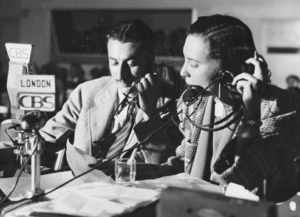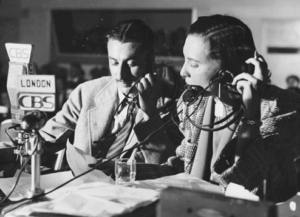Uncategorized
Yad Vashem says it has identified 5 million Holocaust victims with help of AI
(JTA) — Yad Vashem, Israel’s Holocaust memorial, says it has reached a major milestone in its efforts to uncover the identities of all of the Jews murdered in the Holocaust, crossing the 5-million name threshold with the help of AI.
That leaves 1 million names still unknown from the tally of 6 million murdered Jews that is synonymous with the genocide perpetrated by the Nazis during World War II.
Two years ago, Yad Vashem inaugurated a 26.5 foot-long “Book of Names,” which included the names of 4,800,000 victims of the Shoah, at the United Nations headquarters in New York City.
Since then, researchers deployed AI technology and machine learning to analyze hundreds of millions of archival documents that were previously too extensive to research manually, according to Yad Vashem. In addition to covering large amounts of material quickly, the algorithms were taught to look out for variations of victims’ names, leading to the new identification of hundreds of thousands of victims.
Yad Vashem estimates an additional 250,000 names could still be recovered using the technology.
“Reaching 5 million names is both a milestone and a reminder of our unfinished obligation,” said Dani Dayan, the chairman of Yad Vashem, in a statement. “Behind each name is a life that mattered — a child who never grew up, a parent who never came home, a voice that was silenced forever. It is our moral duty to ensure that every victim is remembered so that no one will be left behind in the darkness of anonymity.”
The post Yad Vashem says it has identified 5 million Holocaust victims with help of AI appeared first on The Forward.
Uncategorized
Trump Calls Jewish Supporters of New York’s Mamdani, Who Has Been Accused of Antisemitism, ‘Stupid’

US President Donald Trump speaks to members of the media on board Air Force One en route to Joint Base Andrews, US, Nov. 2, 2025. Photo: REUTERS/Elizabeth Frantz
Donald Trump said on Tuesday that any Jewish person who votes for New York City mayoral candidate Zohran Mamdani, a fierce critic of Israel who has also been accused of antisemitism, is a “stupid person,” the latest in a string of comments over the course of the US president’s career suggesting that Jewish Americans vote against their own interests.
“Any Jewish person that votes for Zohran Mamdani, a proven and self professed JEW HATER, is a stupid person!!!!” Trump wrote on Truth Social.
His social media post followed comments on Monday in which he urged New Yorkers to vote for former New York Gov. Andrew Cuomo, who is trailing Mamdani in the polls. He also threatened to withhold federal funds from New York City if Mamdani wins the Tuesday election.
Mamdani, who identifies as Muslim, has been critical of the current Israeli government but vehemently rejects accusations of antisemitism, which he has faced from many Republican and Jewish leaders.
Mamdani, who according to recent polling is overwhelmingly unpopular with Jewish voters in New York, did not immediately respond to a request for comment. The far-left democrat socialist has repeatedly refused both to condemn the slogan “globalize the intifada,” a phrase widely interpreted as a call to harm Jews and Israelis worldwide, and to recognize Israel’s right to exist as a Jewish state.
The mayoral frontrunner also supports the boycott, divestment, and sanctions (BDS) movement, which seeks to isolate Israel on the international stage as part of an effort to eliminate the world’s lone Jewish state.
Trump has previously targeted Jewish voters for largely voting in support of Democrats.
“If I don’t win this election – and the Jewish people would really have a lot to do with that if that happens because if 40 percent, I mean, 60 percent of the people are voting for the enemy – Israel, in my opinion, will cease to exist within two years,” Trump told an Israeli-American summit ahead of his election last year.
Uncategorized
Hamas Says Body of Israeli Soldier Hostage Found in Gaza, Will Be Handed Over

Hamas terrorists search for the bodies of deceased hostages, kidnapped by Hamas during the Oct. 7, 2023, attack on Israel, amid a ceasefire between Israel and Hamas, in Khan Younis, southern Gaza Strip, Oct. 28, 2025. Photo: REUTERS/Haseeb Alwazeer
The armed wing of Hamas said on Tuesday it had found the body of an Israeli soldier who had been held hostage by Palestinian terrorists in Gaza, and that it would hand over the body at 8 pm (1800 GMT).
Hamas said the body was found in Shejaia, an eastern suburb of Gaza City in an area still occupied by Israeli forces, after Israel granted access to the location for teams from Hamas and the International Committee of the Red Cross.
Under a ceasefire deal that took effect on Oct. 10, Hamas turned over all 20 living hostages held in Gaza in return for nearly 2,000 Palestinian convicts and wartime detainees held in Israel. Hamas also promised to turn over the remains of deceased hostages but says Gaza‘s war devastation has made locating bodies difficult. Israel accuses Hamas of stalling.
Before Tuesday, Hamas had returned 20 of the 28 bodies of hostages that had been buried in Gaza. In return, Israel handed over 270 bodies of Palestinians it had killed since the war began in October 2023, Hamas-controlled Gaza health authorities said.
Hamas-led terrorists killed 1,200 people and took 251 hostages in their cross-border attack on Israel on Oct. 7, 2023. Israel responded with a military campaign aimed at freeing the hostages and dismantling Hamas’s military capabilities and political rule in neighboring Gaza.
The US-brokered ceasefire has broadly held through repeated incidents of violence.
Israel says three of its soldiers have been killed and it has targeted scores of terrorists it says have approached lines behind which Israeli troops have withdrawn under the truce.
Palestinian health authorities say Israeli forces have killed 239 people in strikes since the truce took effect, although experts have cast doubt on the reliability of such figures, which have been shown to be riddled with inaccuracies and do not distinguish between civilians and combatants.
Uncategorized
She claims she saw Hitler’s ashes and danced with Goering. But is any of it true?

Hitler and My Mother-in-Law
By Terese Svoboda
O/R Books, 416 pages, $23.00
Patricia Hartwell had many stories from her time as a correspondent for the US Office of War Information. Once, she said, she took a picture with Adolf Hitler’s ashes so American citizens would see that the war was over. It’s a thrilling tale, but nobody knows if it’s true.
The mystery surrounding this photo — where it is, if the ashes were actually Hitler’s, whether there even was a picture — takes center stage in Hitler and My Mother-in-Law, a lengthy memoir by author Terese Svoboda.

As a correspondent for the US Office of War Information during World War II, Hartwell was the first female reporter to arrive at Dachau and Hitler’s Eagle’s Nest. She also pocketed several of Hermann Goering’s medals. Well-researched, engaging, and occasionally cringe-inducing in its depiction of awkward interactions between Svoboda and Hartwell, the book paints Hartwell as a woman who was both morally dubious and undeniably impressive.
Svoboda, author of the novels Cannibal and Dog on Fire, has plenty of reasons not to believe her mother-in-law, who died in 1998 at age 82. She lied in an oral history of Hawaii’s State Foundation on Culture and the Arts about being accepted into Harvard Law School in 1936, even though women weren’t admitted there until 1950. She claimed several times to have been close friends with Eleanor Roosevelt and that she was invited to stay in the White House on occasion. No records of such a relationship with the former-First Lady exist.
While Svoboda doesn’t hold back her criticisms of her mother-in-law — and she has plenty — the memoir does not demonize her. Instead, Svoboda attempts to understand her mother-in-law’s penchant for embellishment in the context of the patriarchal society in which she lived, one that forced impressive women to be quiet about their achievements. Maybe struggling so long for recognition led Hartwell to feel the need to exaggerate her life story.
The book does not just explore the lies Hartwell told others but also the ones she told herself, such as refusing to believe that her second husband, Dickson Hartwell, a World War II veteran and fellow journalist, beat her children.

And yet among all the falsehoods, there are known facts about Hartwell’s life that seem stranger than the ones she invented. During the Allied occupation of Germany, Hartwell served briefly as the mayor of Berchtesgaden, a resort town where Hitler and other Nazi leaders vacationed. She got to see a collection of looted art recovered from Goering — and picked out a painting to take home. Apparently it wasn’t unusual for members of the American press and military to take souvenirs, no matter how heinous their origin story.
The piece, one of Lucas Cranach’s many versions of “Cupid Complaining to Venus,” was one of Hitler’s favorites. Nearly two decades after Hartwell brought it back to New York, Dickson sold the painting, apparently without her permission, to E. A. Silberman Galleries in order to purchase a small newspaper in Arizona. The Jewish-owned art firm then sold the painting to the National Gallery of London for over a hundred times more than what they bought it for.
Hartwell also claimed to have danced with Goering at a party that the American soldiers held the night of his arrest. According to some reports, rather than punishing Goering, the military fraternized with him. Based on her own archival research, Svoboda determines this claim to be plausible.
Why, Svoboda wonders, would Hartwell “want to boast of not only meeting the second most evil Nazi, but dancing with him?” If it’s a lie, it’s one that seems to work against its teller. If it’s the truth, it’s one most people would probably like to keep hidden. To some, whether it’s fiction or not may not be important. But Svoboda contends that to those who want to understand the type of person Hartwell was, the truth behind this story is crucial.
Although Svoboda remembers seeing the photo of Hartwell with Hitler’s ashes, it never resurfaced after the woman’s death. According to Svoboda’s husband, Hartwell’s oldest son, the ashes were not Hitler’s, just a random pile picked for a posed photo to mark the end of the war. No matter who — or what — the ashes belonged to, it’s the power behind the story, one of a fallen dictatorship, that mattered. And Hartwell clearly understood the power of stories.
The post She claims she saw Hitler’s ashes and danced with Goering. But is any of it true? appeared first on The Forward.


